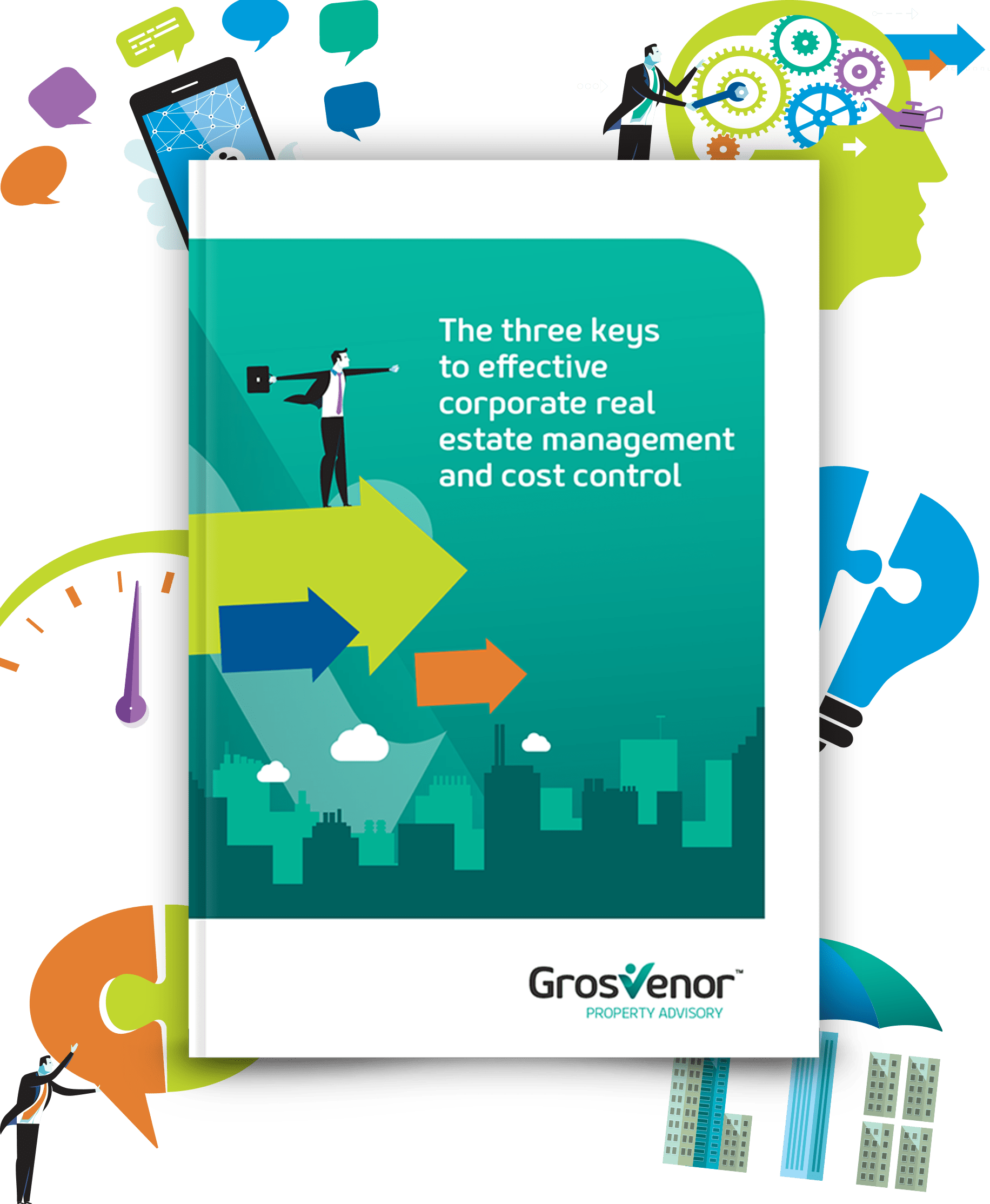
The must have content for your strategic asset management plan (SAMP)
Cover your butt by including the must-haves in your strategic asset management plan (SAMP)

Cover your butt by including the must-haves in your strategic asset management plan (SAMP)

Here are our best 7 ways to reduce uncertainty and improve your plan for future asset needs.

Here is a list of the most common mistakes, and recommendations, made when developing an asset management plan.

When we talk about “Better Practice”, we mean understanding your organisation first, including: objectives, operating environment, culture and ways of working.

In the Higher Education Sector, it’s no longer sufficient to simply provide a great faculty and publish the latest research. It’s now equally important for a competent Facilities Management function to consider the experience and wellbeing of its students. To attract undergraduates, you need great facilities, teachers, classes and courses.

GPT4 has the potential to bridge the gap between existing technology and innovations that the property sector already uses to provide more nuanced insights. It allows for us (humans) to quickly link systems together to build a complete picture of asset and lease performance, customer needs, market trends and other external factors to provide more robust analysis and recommendations.

With all good organisation designs, the core requirement is alignment to strategy. For all supporting functions, it is key to ensure that the structure of the core business is reflected in the structure of the property team.

The delivery of support and back office services under a shared service model is nothing new. However shared services for property and facilities management within the public sector is relatively new and subject to a different set of drivers for value creation.
The Commercial Real Estate (CRE) sector in Australia stands at the threshold of exciting transformations and advancements. Against the backdrop of a cost-of-living crisis, a slowing economy, technological breakthroughs, and evolving societal preferences, it’s crucial to explore the predictions that are likely to shape the Australian CRE landscape in 2024.
NSW Government Asset Management and Facilities Management The NSW Government released a new asset management policy in October 2020 with full compliance required, at the latest, by June 2024. In our experience, it would be fair to say that most facility/property and asset managers are yet to work out how this translates to the better management of government owned facilities and property assets on the ground. We recently became aware that the NSW Government is developing a new strategy for facilities management (FM) and there are clear overlaps with their thinking and the asset management policy. Given Grosvenor’s experience working…
Achieving the goal of net-zero emissions – and net-negative beyond that – requires concerted efforts from organisations which must be guided by a vision, actioned through a deliberate plan, and monitored through accurate and timely data. Your portfolio and assets are vehicles for change – are you using them? Do you know what your current emissions are, your future targets, and do you have a plan to get you there?
GPT4 has the potential to bridge the gap between existing technology and innovations that the property sector already uses to provide more nuanced insights. It allows for us (humans) to quickly link systems together to build a complete picture of asset and lease performance, customer needs, market trends and other external factors to provide more robust analysis and recommendations.
Let’s face it, you’re currently reviewing your property services thanks to a recent pandemic. A review and reform of services within your corporate property portfolio is either underway, under review or rushed to completion.
The property strategy connects directly to the organisational strategy. It is the key linkage between that the organisation is seeking to achieve and how the physical infrastructure supports the achievement of those objectives.
As contract getting longer, focus on outputs, not inputs, relate to services, not products and have higher numbers of stakeholders to service they require a relationship-based approach. More importantly, if you want the service provider to do more than just the minimum, then you must (as a client) take an active interest in THEIR needs as well as your own.
The delivery of support and back office services under a shared service model is nothing new. However shared services for property and facilities management within the public sector is relatively new and subject to a different set of drivers for value creation.
A while back I posted a short piece on a phenomenon which Grosvenor termed ‘Structural Vacancy’. It’s the situation that occurs when organisations reduce their staff numbers over a short period of time leaving a significant amount of vacant office accommodation.
Flexible working arrangements are an inevitable consequence of a number of global forces reshaping the way we work and how we engage with technology. No organisation is immune, but nor should the inevitable be feared. Here’s my top 3 observations of how early-adopting organisations have successfully made the shift to a new, more flexible workspace.
In the Higher Education Sector, it’s no longer sufficient to simply provide a great faculty and publish the latest research. It’s now equally important for a competent Facilities Management function to consider the experience and wellbeing of its students. To attract undergraduates, you need great facilities, teachers, classes and courses.
Tension and mutual frustration often characterise the relationship between Procurement and Property. But why? You both want to achieve greater value for your organisation, right? Over the last five years there has been significant change in the relationship between the property and procurement functions. In this article, Kent Stuart takes a light-hearted look at the issue and tries to reframe the property function for procurement professionals.
The Commercial Real Estate (CRE) sector in Australia stands at the threshold of exciting transformations and advancements. Against the backdrop of a cost-of-living crisis, a slowing economy, technological breakthroughs, and evolving societal preferences, it’s crucial to explore the predictions that are likely to shape the Australian CRE landscape in 2024.
NSW Government Asset Management and Facilities Management The NSW Government released a new asset management policy in October 2020 with full compliance required, at the latest, by June 2024. In our experience, it would be fair to say that most facility/property and asset managers are yet to work out how this translates to the better management of government owned facilities and property assets on the ground. We recently became aware that the NSW Government is developing a new strategy for facilities management (FM) and there are clear overlaps with their thinking and the asset management policy. Given Grosvenor’s experience working…
Achieving the goal of net-zero emissions – and net-negative beyond that – requires concerted efforts from organisations which must be guided by a vision, actioned through a deliberate plan, and monitored through accurate and timely data. Your portfolio and assets are vehicles for change – are you using them? Do you know what your current emissions are, your future targets, and do you have a plan to get you there?
GPT4 has the potential to bridge the gap between existing technology and innovations that the property sector already uses to provide more nuanced insights. It allows for us (humans) to quickly link systems together to build a complete picture of asset and lease performance, customer needs, market trends and other external factors to provide more robust analysis and recommendations.
Let’s face it, you’re currently reviewing your property services thanks to a recent pandemic. A review and reform of services within your corporate property portfolio is either underway, under review or rushed to completion.
The property strategy connects directly to the organisational strategy. It is the key linkage between that the organisation is seeking to achieve and how the physical infrastructure supports the achievement of those objectives.
As contract getting longer, focus on outputs, not inputs, relate to services, not products and have higher numbers of stakeholders to service they require a relationship-based approach. More importantly, if you want the service provider to do more than just the minimum, then you must (as a client) take an active interest in THEIR needs as well as your own.
The delivery of support and back office services under a shared service model is nothing new. However shared services for property and facilities management within the public sector is relatively new and subject to a different set of drivers for value creation.
A while back I posted a short piece on a phenomenon which Grosvenor termed ‘Structural Vacancy’. It’s the situation that occurs when organisations reduce their staff numbers over a short period of time leaving a significant amount of vacant office accommodation.
Flexible working arrangements are an inevitable consequence of a number of global forces reshaping the way we work and how we engage with technology. No organisation is immune, but nor should the inevitable be feared. Here’s my top 3 observations of how early-adopting organisations have successfully made the shift to a new, more flexible workspace.
In the Higher Education Sector, it’s no longer sufficient to simply provide a great faculty and publish the latest research. It’s now equally important for a competent Facilities Management function to consider the experience and wellbeing of its students. To attract undergraduates, you need great facilities, teachers, classes and courses.
Tension and mutual frustration often characterise the relationship between Procurement and Property. But why? You both want to achieve greater value for your organisation, right? Over the last five years there has been significant change in the relationship between the property and procurement functions. In this article, Kent Stuart takes a light-hearted look at the issue and tries to reframe the property function for procurement professionals.

If you have the responsibility for managing the complex property assets and accommodation that your organisation uses to deliver its core business, then this guide is for you:
This guide is as relevant to organisations that use property assets to accommodate staff and to service customers, as it is to transport, health, education and government property.
